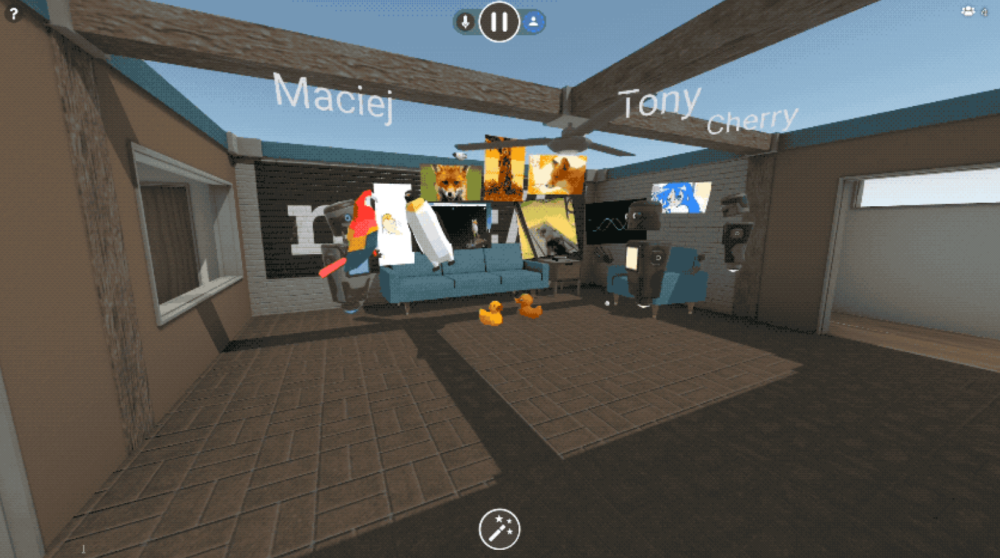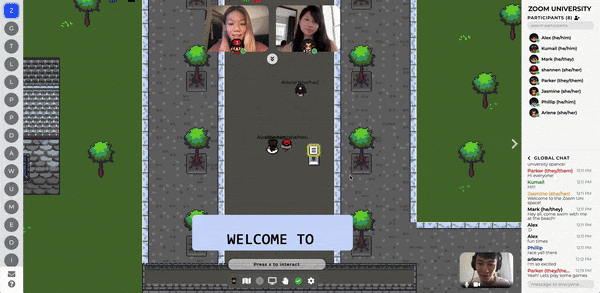
In March 2021 I joined the Edinburgh Future Institute (EFI) at the University of Edinburgh as Learning Design and Technology Lead where I’ll be providing technical and pedagogical expertise to support the development of the digital learning environment used by EFI.
EFI courses are different in that they are designed to use advanced hybrid delivery. In this model EFI will be teaching students together on and off campus as a single cohort without double-teaching, students having the flexibility to move between modalities. An additional aspect is most courses will use an intensive, two-day model with pre and post activities.
There are clearly a number of challenges supporting students and staff when there is this degree of flexibility in the time and place of study, whilst also maintaining a community of scholarship. Each month I plan to post a summary of ‘things’ that are influencing my thoughts and reflections around the EFI fusion vision.
Big thought
Even as the world rapidly embraces more and more complex technologies like artificial intelligence (AI), it’s still the human connection that gets our attention. That makes emotional intelligence (EQ) more important than ever. In a world gone digital, it’s crucial to design products and lead people in the analog world, based on our humanity. … emotionally intelligent organizations get an innovation premium. These organizations reported more creativity, higher levels of productivity and employee engagement, significantly stronger customer experiences
MIT Technology Review
This quote comes from an MIT Technology Review article posted shortly after the Mars Perseverance landing, highlighting how NASA deputy program manager Matt Wallace was inspired by a video attached to his daughter doing gymnastics to include additional cameras on the Mars landing module capturing more of the moment of touchdown, increasing the sense of being there, an opportunity to ‘captivate and inspire humanity’.
There is probably an entire blog post or research paper that could be written around emotional intelligence and engagement in fusion learning. The challenge, how to design learning and environments that support our ability to connect with the moment.
Little finds
Related to the concept of emotional engagement some posts/resources that have caught my eye this month are included below:
- Microsoft Mesh – “You can actually feel like you’re in the same place”: Microsoft Mesh powers shared experiences in mixed reality – the sense of presence in 3D worlds was something I was interested in back in 2001 when doing my MSc and event before then this question has long been asked and there have been many disappointments. How Microsoft Mesh will evolve is to be seen but interesting to consider how mixed realities could be used.

- Mozilla Hubs – “Hubs is a VR chatroom designed for every headset and browser, but it is also an open source project that explores how communication in mixed reality can come to life. Step inside one of our virtual rooms or build one from the ground up. … Because we are using web standards (WebVR and eventually WebXR) to deliver this content, we are able to support every single Mixed Reality headset”. I discovered Hubs out of discussions with one of the EFI Fellows, James Lamb. Mozilla have also developed a Discord ‘Hubs Bot’ for quick collaboration

- Wonder and Gather – there is a long list of this type of presence aware video conferencing platforms. At the EFI a studio session was run with Wonder and whilst there were technical issues a number of EFI Fellows mentioned to me after that they liked the ability to move around and speak with smaller groups. Gather is interesting in that it lets you design maps and include interactive objects, which can be used to create fun icebreakers.

- Whiteboards and spatial collaboration – via the ALT-MEMBERS mailing an interesting post from David White on Spatial collaboration: how to escape the webcam, which questions the ‘skeuomorphic’ nature of video conferencing and alternative opportunities around collaborative whiteboards to create a different sense of ‘togetherness online’: “30 people appeared in the form of named cursors and answered three questions with digital sticky notes while we discussed via voice. … What we saw was a ‘collaborative swarm’ of cursors which was a little distracting at first but as the sticky notes appeared it suddenly felt like we were together, in the same place, working on the same thing”
The resources above highlight the variety of ways you can engage learners emotionally. A research paper that also landed in my inbox this month which explores the concept of rational, emotional and spiritual knowledge is ‘A Multi-Dimensional Hybrid Learning Environment for Business Education: A Knowledge Dynamics Perspective‘ (Pavlidou, Dragicevic and Tsui, 2021)
In terms of hybrid learning the course design referenced in this paper uses mixed modalities but not in a simultaneous context, the cohort either having sessions which are either all online or all face-to-face. However, even with this in mind it highlights the emotional response can be very different depending on physical proximity:
proximity aids with building an emotional ambience that enables familiarity and rapport … The proximal and direct interactions promote also a greater sense of peer-to-peer accountability and trust … The students explained that a high sense of accountability is a result of a tendency to conform to general ethical standards when people look each other in the eyes, i.e., a “tendency to behave better in person”
When we are all abstracted into a ‘named cursor’ there is a chance to collectively feel a different type of proximity, to have a shared emotional response, a feeling of togetherness.
Easter Eggs
I’m a regular reader of Dr Tony Bates’ blog and always look forward to reading his insights and discovering related content. A recent post, ‘Teaching large lecture classes online in the fall?‘, is a case in point and I’ve shared a couple of highlights from this post:
Interesting post from @drtonybates on “Teaching large lecture classes online in the fall?” which has a number of additional points/resources https://t.co/hlt0hlu4yy #altc ⎘
— Martin Hawksey (@mhawksey) March 22, 2021
“research in 2020 showed that universities that made early decisions (by the end of May) did better in preparing for the fall semester, even if they had to adjust nearer the time” https://t.co/746nxuuLB0 #altc ⎘
— Martin Hawksey (@mhawksey) March 22, 2021
“The University of Ottawa has told students that ‘we are equipping all our classrooms with educational technology that will allow for simultaneous in-person and videoconference teaching.’” https://t.co/MkCdHOyCwA #altc ⎘
— Martin Hawksey (@mhawksey) March 22, 2021
“One of the biggest student criticisms … has been the loss of a sense of community. … a great deal of research was done on online communities of inquiry, which emphasise the importance for student motivation of collective online activities.” https://t.co/zJm11HPL1z #altc ⎘
— Martin Hawksey (@mhawksey) March 22, 2021
Finally, the “Teaching Dual Audiences from the University of Southern Florida’s Academy for Teaching and Learning Excellence” has some interesting options to consider for Flexible Hybrid https://t.co/aItDxyGhbP #altc
— Martin Hawksey (@mhawksey) March 22, 2021
